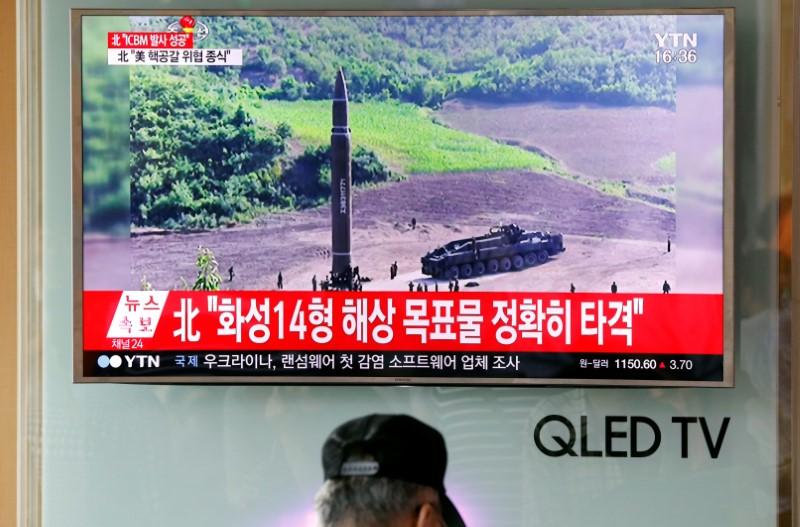North Korea’s recent threats to launch ballistic missiles at the U.S. territory of Guam might have been motivated by the fact that the missiles the regime currently possesses can’t reach the continental United States with a nuclear warhead. A newly released report suggests that North Korea’s July tests of its intercontinental ballistic missiles were an elaborate deception meant to exaggerate the capabilities of the regime’s weapons.
Last week North Korea said that it was looking into a plan to attack Guam with four intermediate-range ballistic missiles. The statement came just after U.S. President Donald Trump promised to unleash “fire and fury” if North Korea continued missile and nuclear weapon programs that are believed to be primarily targeting the United States.
North Korea conducted tests on July 4 and July 28 of its latest intercontinental ballistic missile (ICBM), the Hwasong-14, and claimed success in both tests. One of the most feared scenarios on the U.S. side is that an unstable North Korean regime might one day use such a missile to deliver nuclear warheads in an attack against cities across the continental United States.
Multiple news reports cited an unpublished U.S. Central Intelligence Agency analysis that says that although the Hwasong-14 test conducted on July 28 failed to demonstrate successful atmospheric reentry, the missile could conceivably reach targets in the continental United States if flown on a normal horizontal trajectory instead of the sharply vertical trajectory used during the test.
Many media outlets reacted to last month’s missile tests with alarming headlines, taking North Korea’s assertions at face value and suggesting that the communist dictator Kim Jong-un’s missiles can easily hit New York and Washington.
However, a new report released by the Bulletin of the Atomic Scientists last week analyzed the data from the two Hwasong-14 flight tests “based on detailed study of the type and size of the rocket motors used, the flight times of the stages of the rockets, the propellant likely used, and other technical factors.”





